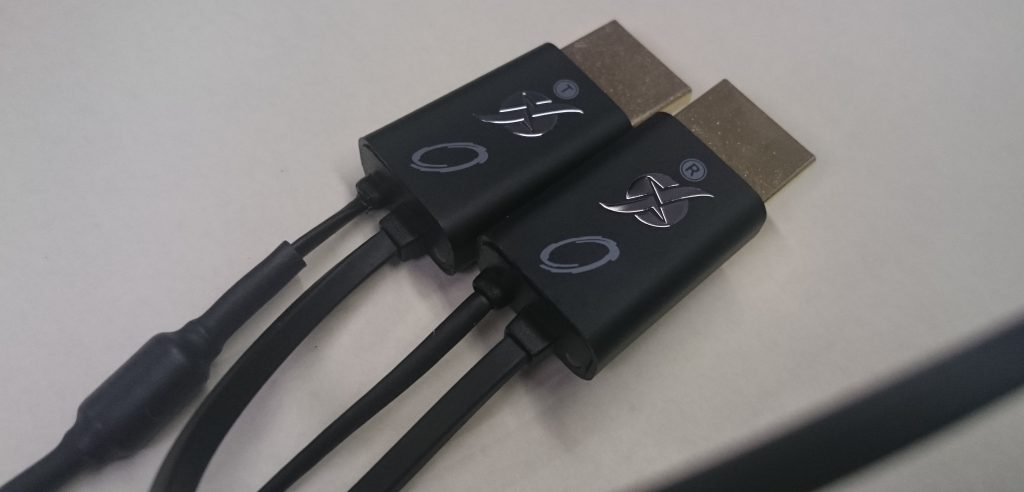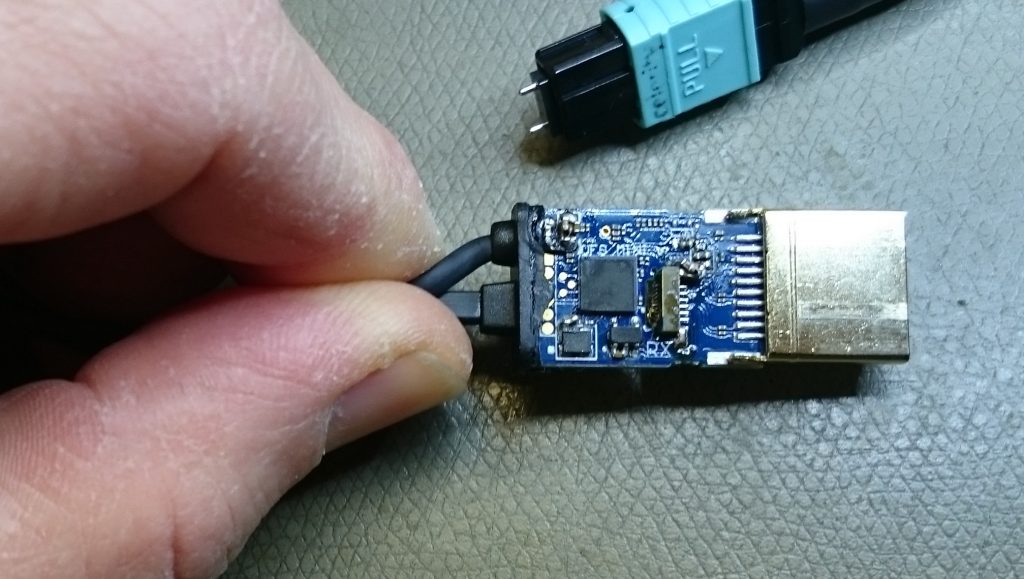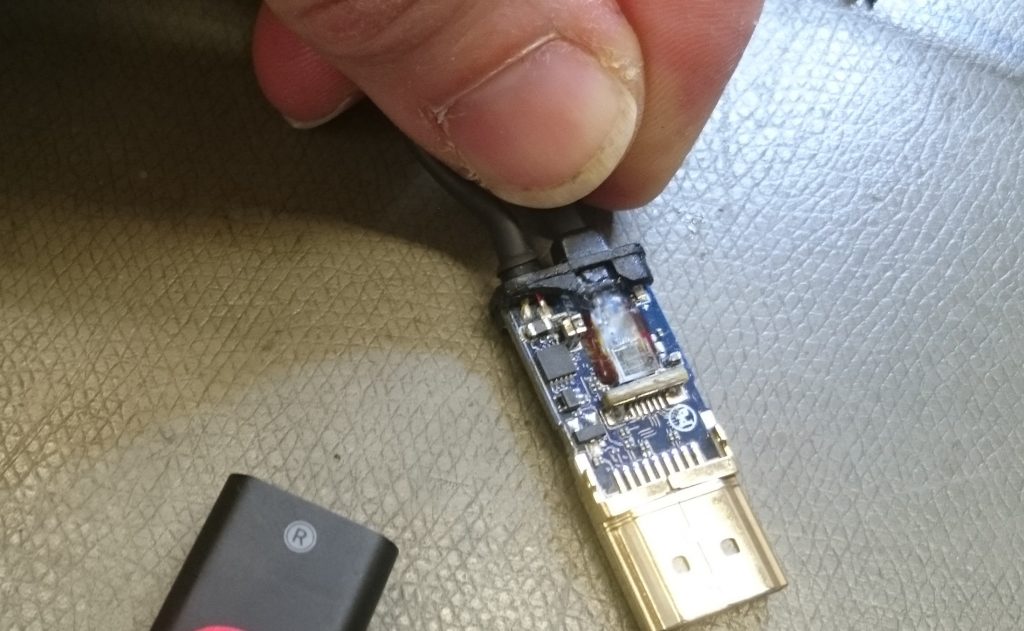Audio Visual cables seem to be the most miss-understood items you can discuss. Some people believe a cable makes no difference to the performance of the system. A large number of people think it’s digital, so it’s perfect, so nothing to ‘worry about’ or “Even Talk About’. So much miss information about cables and their purpose, a minefield. It’s a battle to write anything meaningful without a lot of prejudice bought by the reader. So it’s impossible to have a significant or useful evaluation and discussion.

I have known Cinemike for many years now. How do I know them? I am a customer. I bought equipment (paid real money) from them to do QC on Bluray discs we were producing at the time. I was impressed; I also had some criticism. It showed they were a ‘serious player’ in this market when they took my criticism on board improving the performance, making both of us very happy. I work with professional equipment manufacturers regularly who make equipment for a specific purpose, to do the job correctly. These guys based in a sleepy village outside
So what is a cable? It’s a device to transmit a signal from one piece of equipment to another. Its role is simple its to carry that single as close to the original intent as possible. First of all, there is no such thing as a digital cable if it uses metal for its transmission path. All metal-based cables are analogue and use analogue voltages to simulate digital states. Showing its origins in morse code, and as you have all heard in movies the sounds used to represent dots and dashes, that is an analogue representation of a two-state system. Ultimately, pseudo digital cables such as HDMI are using a similar method. The transmitter is sending two states of voltage, the higher state representing a ‘1’ and the lower voltage representing a ‘0’.
Now that sounds very simple, and yes it is. The issue is, the faster the switching, the higher the frequency travelling down the cable, the longer the length of the cable causes attenuation to the signal. Meaning it will become harder to distinguish between the two states. Added to this, the longer the cable, it will act as an antenna, picking up radio frequencies most of which today are human-made. Mostly mobile phones, 5G will be a nightmare for cable design. This noise will cause spikes making it even harder to identify the two states of voltage. The textbook example of a pure square wave is just that an image in a textbook. By eye on a scope, the signal actual looks like noise, making it hard to identify the two states.
Moden electronics are outstanding and within limits does an excellent job of identifying and distinguishing the two states. A lot of issues come into play once the cable exceeds a certain length. In HDMI 10 meters is the limit, beyond that the single fails. You get green noise artefacts or zits when the error concealment fails; you get nothing. So the design of a cable becomes very critical, very few people making AV cables seem to actually understand the problems and bedazzle the buyer with all sorts of pseudoscience.
Regardless of how well made a metal-based cable is it has many problems. The 1st its length as it will always attenuate the single. The second is the cable will act as a conductor of floating noise from the two pieces of equipment it connects. The third is its a pseudo digital device using analogue voltage levels to represent digital states that are easily corrupted.
An actual pure digital cable (Fibre Optic) two states can be achieved by using light. Light on been a ‘1’ state and light off no light been a ‘0’. An actual digital state, having no ambiguity. Also, as its not an electrical connection, the pieces of equipment cannot ground themselves to each other, so it doesn’t transmit noise between the two devices. With light, the, higher the frequency used does not cause attenuation as it merely just light, no light. The limit is the speed the transmitter can switch, and the receiver can detect.
Projectors are still today the best way to get a big-picture; they also have issues. The main one is they have a massive power supply that regardless of how well it is insulated produces massive amounts of noise. So the best thing would be if you can you galvanically isolate it. Galvanic isolation means there is no direct conduction path connection between two devices.
The perfect method to achieve this is to connect its video feed via a Fibre Optic cable producing a prefect 100% Galvanic isolation. A traditional metal-based HDMI cable cannot accomplish this. One issue a metal-based cable cause is a tremendous amount of noise passes back down the HDMI cable finding its way into the sound system. Digital to Analogue converters are very sensitive to noise. Meaning the purity of the sound produced gets distorted by the noise feeding into them from other sources such as the power supply of the projector. Regardless of how well a metal-based HDMI cable is designed, it won’t stop this. If the cable is engineered well, that will work against you as it will also transmit the noise really well back through the system.
I first tested the original fibre cable that the CineMike version is based on against the best metal-based cable a Cinemike Blue. I am using a DLP cinema projector, why DLP? Well DLP is truly Digital even the light you see on screen is ‘Digital’ it’s never gone back to an analogue stage. All TV’s on the market are analogue, and all projectors other than DLP are also analogue. The final pixel has a Digital to Analogue (DAC) converter to control the voltage of the brightness of the pixel. Which then goes into an amplifier to achieve the intensity which then exaggerates any noise it’s picked up along the way. So it’s easy to see how issues can creep in.
As just discussed DAC’s are very sensitive to noise, so by using a genuinely digital projector, I am removing this stage. I also chose a Xenon based lamp projector as the noise is huge from them, so was interested to see how the backwash of noise into the system would be. I used a Barco DP4K-23B cinema projector, a true 4096 4K cinema projector.
First thing I noticed is the Blue Cable and the Cinemike Fibre cable the picture looked identical. The original fibre cable didn’t which I put down to a clock error issue in the original. The CineMike version has clocks in them that cost about 100 times the price of the original clock and are military-grade. The fact that the Cinemike Fibre and the Blue Cable looked identical was not a surprise. I was happy as this was the correct outcome. Now the more important aspect. The effect on the sound! The projector was now Galvanic isolated from the rest of the system with the fibre cable.
The result was nothing short of revolutionary; the sound had improved on a level I was not expecting. First, it had a delicate purity coupled with an increased dynamic forcefulness. Separation of sounds was truly revealing; detail was improved. Solidness and power in the bass were scary. Coupled with detail in the low end, I had never heard before on this system. It gave an amazing lifelike sound that was so natural & smooth it became addictive to listen too. It’s the whole reason you buy an AV system. It made you feel happy and relaxed, and ultimately you are totally engaged in the sound and vision.
Right Ok, I tried the original Fibre cable now you would think that because it’s Galvanic isolating the system, it would be an improvement? Wrong. Compared to the reference Blue Cable, it was absolutely killing the sound it made the system sound broken small and annoying. It was not making me feel happy; it was doing the opposite it was making me very angry. Not good! So other than for measurements later I thought I couldn’t be bothered to use it in these tests as it had proved to be worthless. It has been such an unpleasant experience reducing a £250,000 worth of equipment to dust.
So on first tests, the CineMike Fibre cable had not only achieved its goal it had surpassed it by a country mile. The picture was correct; all the bits were getting to the screen. It had shown it was truely Galvanic isolating the system from the vast electrical noise from the projection system. Total success so far, so good!

The second test using a Sony Broadcast monitor the Sony BVM-HX310, this is a double modulated LCD based display with full P3 colour space. What I am looking at here is Galvanic isolating the display from system noise. The screen is technically classed as analogue compared to DLP. It may have a digital input; ultimately, the brightness is controlled in an analogue way as the brightness of each pixel is an analogue voltage derived from a DAC. In fact, 26,542,080 of them as it has RGB pixels. So noise getting into the display will affect the image. Its a fact, it can be measured!
First, I tested the reference Blue Cable, yes a good looking image, sharp and defined. I was now even more keen to see how the CineMike Fibre cable would perform. It did! It was another level; the image now looked effortlessly transparent, it looked very similar to the monitor driven by its HD SDI input. In fact, in shadow detail, it looked cleaner, more defined. This is from the galvanic isolation from the rest of the system. I tested the screen contrast ratio between the Blue Cable and the CineMike Fibre. Yes, the system noise was effecting the contrast ratio, it was around 850,000: 1 with the Blue Cable it was closer to spec at 990:000:1 with the Cinemike Fiber. Proving the wash of noise even on a professional display can be affected by floating system tumult. By galvanic isolating the display, we can improve its overall performance. I measured the colour primaries; this is how saturated each primary colour you have can achieve. Yes, the lack of noise had given us 6% more saturation: not a huge amount but enough to make a difference. The system noise was desaturating the image, by isolating it, the pixels could achieve their true potential. What we did measure was very close to Sony’s spec for the monitor. Again a myth is that cables can make things better, no they can’t all a good cable can do is help you achieve as close to 100% of what has been transmitted. If noise is getting into the components, it will affect performance. Only DLP is truly digital and not effected by system noise, unlike LCD/OLED/LED; these are all analogue display technologies.
Again I tested the system audio with the Blue Cable and the CineMike Fiber. With the Blue Cable, it sounded as I expected. When I tried it with the Fibre Cable again a significant improvement not as dramatic as with the projector as the backwash of noise from a xenon 2.5Kw lamp is quite big compared to a monitor. Most notably between the Blue Cable and the CineMike Fibre was the fine dynamics when using the Fibre compared to the Blue Cable. Again the bass had more power and detail when the Fibre cable isolated the system.
I ultimately had to look at performance on a test analyser to see if what I am seeing and hearing can be objectively measured. I believe if you can see it or hear it, you can measure it. The art is getting meaningful measurements; oppositely you get into lies dam lies and statistics territory.
A lot of people say confirmation bias plays a large part in thinking something is better. I did blind test these cables in a random order, yes I could tell every time with the monitor test, both in sound and picture. On DLP you should not be able to tell the difference as its purely modulating the bits to a visual greyscale. Well between the Blue Cable and the Cinemike Fibre, they looked identical. The original Fibre Cable looked dire compared to the metal Blue Cable which as I said should be a physical impossibility that the picture should look degraded. Well, it did! Luckily I have equipment that can measure and isolate the issue. So I know I’m not seeing or hearing things and yes it was clock errors.
Ok, Jitter exhibited on the Blucable is not bad and is about the best I’ve seen for a metal cable added 20 Pico Seconds of TMDS clock jitter +/– 0.1Tbit. An out the box free cable adds about 150 Pico Seconds well within the HDMI spec of 300 Pico Seconds. Some of the more expensive cables I’ve seen which make wild claims introduced some of the worst Jitter. The Eye Diagram is often quoted in tests; I found almost all cables passed this test, and if it failed the cable had visible issues such as dropped frames and picture drop out.
The Blue Cable also had a very low noise characteristic. Which is a credit to its design, the actual cable itself is designed by and made by Jenving technology, founded 35 years ago in Sweeden, sold under the Supra Brand. Then terminated by CineMike using techniques they have perfected with CineMike connectors that are the right impedance. The cable itself is only really good for the picture, and long runs up to 10 meters. Sound over HDMI is another story! Even though we have looked at the sound and sound quilty here, this article/review is only looking at the effect the display cable has by isolation of the display device on the rest of your system.
Now the original Fibre cable was a total mess and measured 390 Pico seconds of noise, and the transmitter injected 690Mv of noise across the spectrum into the system, and the receiver was not far off at 550Mv. Remember an 8bit display has 0.00390625v or 3.9mv as its starting point.10 bits is even more sensitive 0.0009765625v or 0.9Mv steps so 550Mv will flood the DAC causing errors.
The CineMike version with its military-grade clock has just 5 Pico Seconds of Jitter and 0.1Mv of noise across the spectrum so you can see how it would not cause a visual error on a 10 Bit panel.
On a DLP cinema projector, we have no errors caused by noise. Saying that due to the clock in the original fibre cable been so bad, it did cause errors by its poor implementation & noisy components affecting its timing. In turn, caused errors in the data that the DLP projector was using. Making the picture look forced and unnatural due to very high error concealment going on. This is an advert for quilty digital clocks and using the right one for the job. The choice CineMike made paid off with dividends as it produces a close to perfect result. Isn’t that what ‘Digital’ is supposed to be? In reality, Perfect Digital sound and pictures are harder to achieve than its analogue equivalent. The industry, driven mainly by PR companies, has been fooling itself and us for years about the ‘Digital Nirvana’. This has created the likes of CineMike who re-engineer equipment to achieve its true potential. Most equipment is built for a price to get the best it has to be built for a purpose. These guys have created a home cinema market that if you want the best you can have it. The pricing is not outrageous considering each item been rebuilt by hand. I have seen and heard many million Dolar Home Cinema’s that come nowhere close to the results these guys are getting at a fraction of the cost.
So my conclusion is the CineMike HDMI Fiber Cable is a genuinely transparent transport method for picture over short or even long distances up to 300m. Why would you buy this? At €3,000 it is not cheap. Well, if you have a $70,000 projector its a no brainer. Even if you have $20,000 projector, it’s still a must. If you have $500 TV you would be mad; you should go use the money to buy a better TV, the CineMike Blue HDMI would be a perfect choice. This cable is for high-end systems only. No cable should cost more than 20% of your systems components. So you can do the maths if you think your system deserves it.
The CineMike Fibre its excellent value for money! I know of Metal HDMI cables that are three times the price of the CineMike Fibre and a hundred times worse in quality. CineMIke Fibre is genuinely the way to go as it is a genuine digital cable, built correctly. It does what a cable should do complement the system rather than degrading it.
I can’t recommend this cable enough if you have the system for it you would be no brainer must-have. On a high-end system, this actually would be the cheapest and most effective upgrade you can get. Make that call and go for a demo!
The Cinemike Blue Cable is Classed as – Reference Status
The CineMike Fibre Cable is Classed as – True Reference Status

